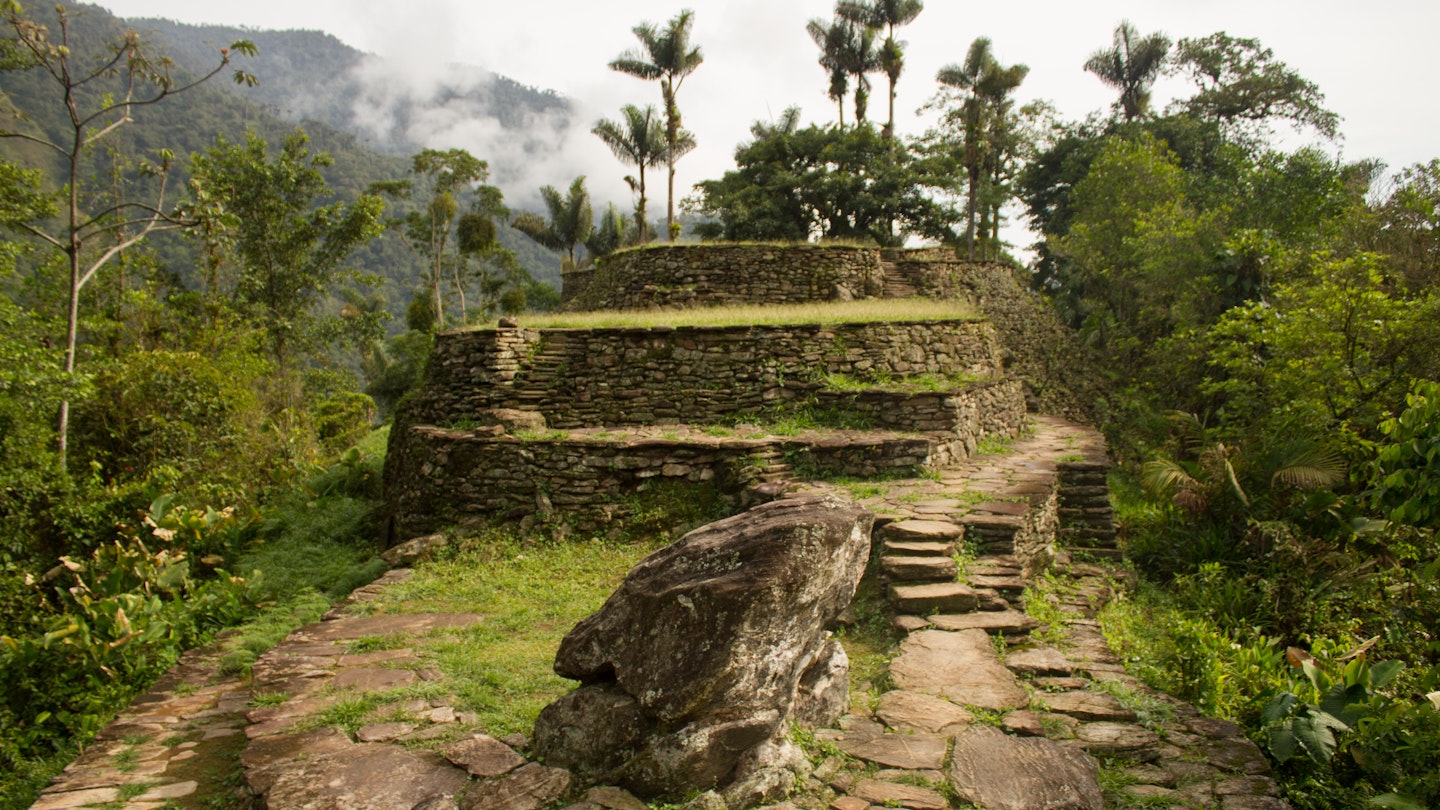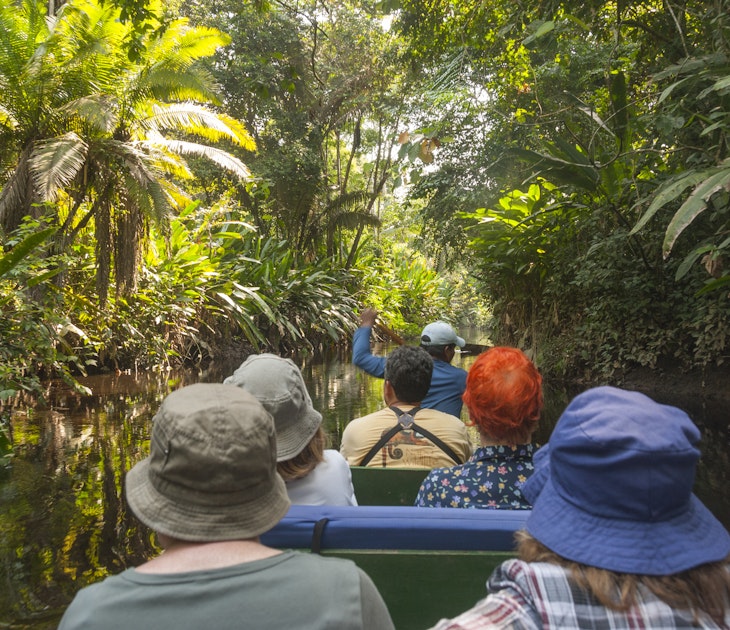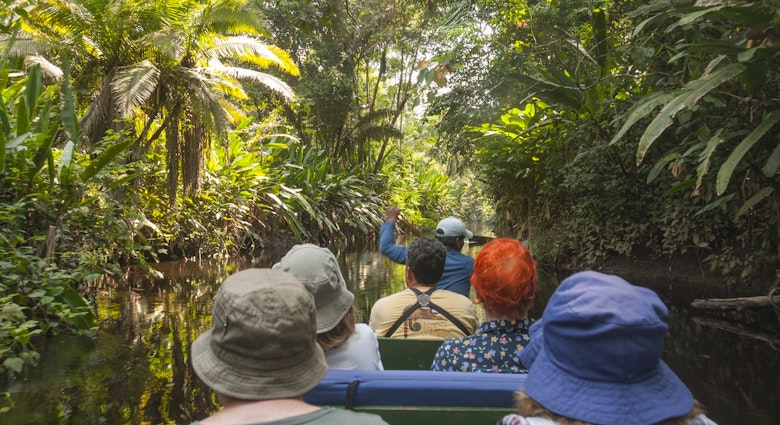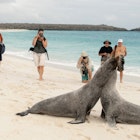South America offers rich pickings to travellers eager for adventure. This huge continent encompasses almost every habitat and climate zone imaginable – from lush rainforest to arid desert, fertile pastures to active volcanoes. These landscapes have outlasted millennia of different civilisations, many of which left behind a treasure trove of ruins waiting to be explored.
Whether your idea of fun involves climbing snowy peaks, exploring ancient temples or scuba diving on tropical reefs, South America has an experience for you. Here are six essential adventures that you’ll never forget.
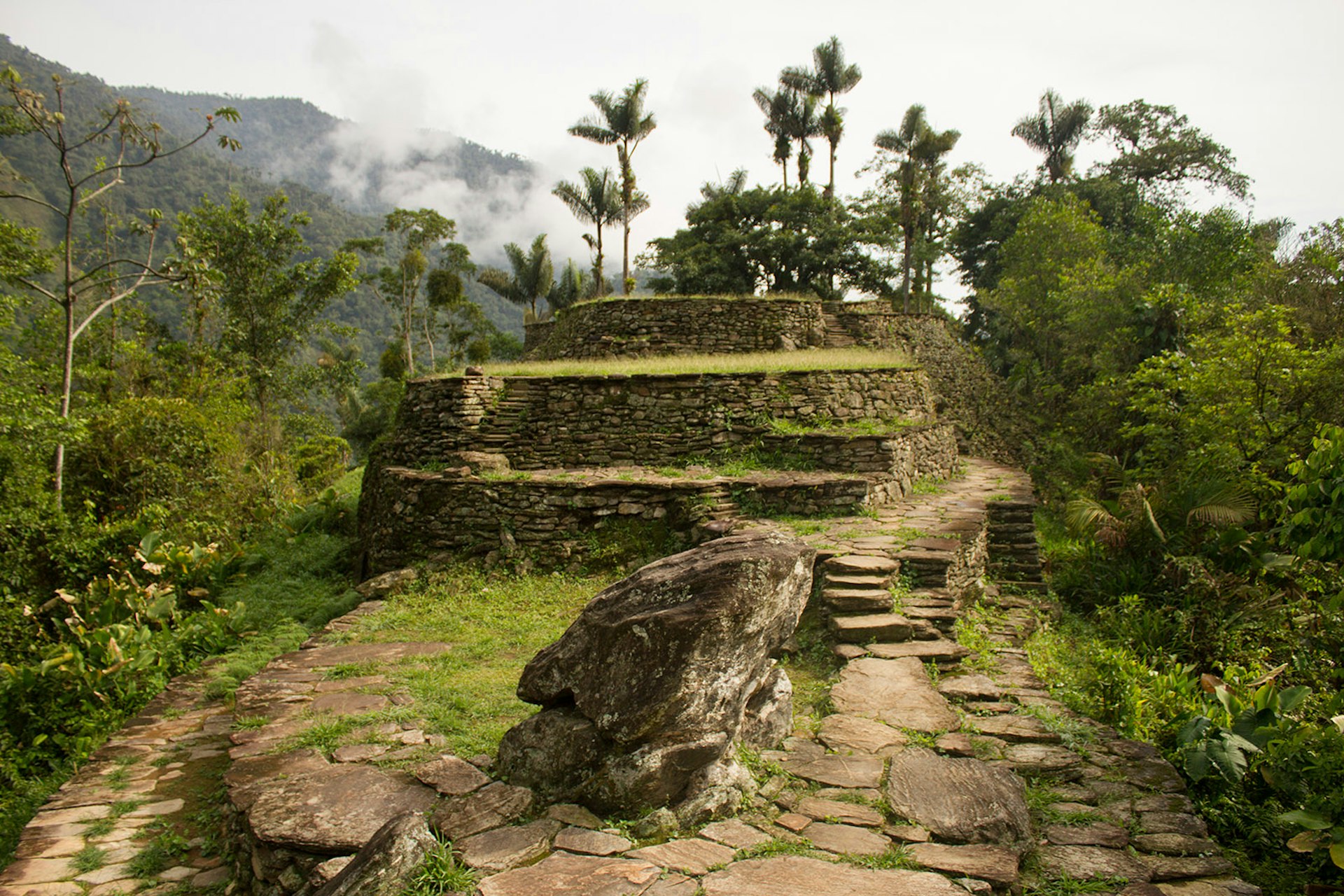
Trek to Ciudad Perdida, Colombia
Visitors to the Parque Nacional Natural Tayrona in Northern Colombia can enjoy lounging around in lots of dense rainforest and beautiful sandy beaches. But those eager for an active adventure should look into the wild 5-day trek out to the ‘Lost City’, Ciudad Perdida.
Ciudad Perdida is thought to date back as far as the 7th century, but was abandoned soon after the arrival of the Spanish. Overtaken by forest, the remains of the city were undisturbed until they were rediscovered by grave robbers in 1972. While the archaeological remains of the city are not as breathtaking as Peru’s famous Machu Picchu, the hike out to the ruins take you on an unforgettable adventure through dense forest, up and down steep hills and finally a climb up 1,200 stone steps to the ruins of the city itself. The rough tracks and regular river crossings mean that this trek is easier during the dry season, which runs from December to March.
Climb an active volcano in Pucón, Chile
Pucón lies 780km south of Santiago in Chile’s stunningly beautiful lake district. Situated on the shores of Lago Villarrica, and surrounded by rivers, waterfalls and hot springs, the city offers a range of outdoor activities such as fly-fishing, kayaking and nature walks. But the hope of reaching the summit of the Villarrica Volcano in Parque Nacional Villarrica is what brings most visitors to Pucón.
The climb (usually over six hours) is physically demanding and should only be attempted with the help of a reputable tour company. Reaching the summit is not a forgone conclusion – adverse weather conditions and the volcano itself (one of Chile’s most active) can force climbers to turn back. But those who get to the top will be treated to spectacular views and (when conditions are right) a glimpse of a lava lake inside the crater. And after the hard work going up, the descent is less strenuous: an exhilarating 30-to-60 minute sledge ride down the side of the mountain. Although ascents are possible year-round, you’ll have the best chance of success between October and April.
Cross the Atacama Desert, Chile and Bolivia
The Atacama Desert in northern Chile is one of the most otherworldly places in South America. The extreme lack of moisture gives the region incredibly clear skies – there is no better place on earth to look up at the stars and consider your insignificance in relation to the universe.
Although the high altitudes do not make it an easy journey (many experience headaches and lethargy), crossing the Atacama between San Pedro de Atacama (Chile) and Uyuni (Bolivia) is an unforgettable experience. The journey takes several days in a 4x4 vehicle and takes you past the enormous Licancabur Volcano, thermal springs, moon-like valleys and brightly coloured mineral lakes teaming with flamingos. But the indisputable highlight of this journey is Salar de Uyuni, the world’s largest salt flat. The lack of features on this enormous white expanse makes this a popular spot for taking perspective-bending photos; it also features an eerie ‘cemetery’ of ancient, abandoned trains.
The crossing is can be made in either direction at any time of year. Salar de Uyuni looks particularly spectacular after rainfall and although this is unpredictable, your best chance will be between December and April.
Drive Ruta 40, Argentina
For many young Argentinians, driving the epic Ruta 40 is seen as a rite of passage. Starting close to the southernmost point of Argentina, the road known as ‘La Cuarenta’ runs northwards for over 5,000km, crossing 11 provinces and 20 national parks before finishing up at the border with Bolivia.
For those who don’t have time to drive the entire route, the Patagonian section of the track still makes for an amazing road trip, taking in some of the most awe-inspiring scenery in South America. Allow plenty of time for side trips to the Perito Moreno Glacier in El Calafate and Mount Fitz Roy in El Chaltén.
While the surroundings are in turns stunningly beautiful and starkly desolate, this is no Sunday drive. Significant stretches of the route are made up of ripio – rough, rocky gravel – so plenty of preparation and a well-equipped 4x4 vehicle are advisable. The Patagonian winters are harsh, so Ruta 40 is best attempted between November and March.

Shark diving in the Galápagos, Ecuador
Located 1,000km west of mainland Ecuador, the Galápagos Islands are home to vast numbers of plants and animals found nowhere else on Earth. In recognition of the unique wildlife, the islands are designated a UNESCO World Heritage Site and the surrounding waters form a huge marine reserve.
While there is plenty of wildlife to see above ground – including the Galápagos giant tortoise – the real riches are found in the sea. Marine iguanas, sea lions, dolphins and sea turtles are easily spotted from boats, while a true thrill can be found if you jump right in and snorkel or scuba dive with sharks. There are 12 shark species found in this region, including whale sharks, Galápagos sharks and hammerheads.
While day trips from island bases are available, the best dive experiences require the booking of ‘liveaboard’ dive boats, which enable divers to reach the wilder waters of the remote Darwin and Wolf Islands. The water is coldest between June and November, but June also brings the highest chance of seeing whale sharks and huge shoals of hammerheads.

Cycle the Death Road, Bolivia
For many travellers, an experience doesn’t become an adventure until you add a generous pinch of danger. This partly explains the popularity of cycling down the North Yungas Road, popularly known as ‘Death Road’. Setting the danger element to one side for a moment, this really is an epic cycling adventure – cyclists descend 3,600m on 64km of mostly downhill gravel track which takes in truly breath-taking scenery.
While many thousands of riders descend this road each year without mishap, the danger element is not entirely hype. Rough tracks, hairpin bends and sheer drops without barriers mean that injuries (and, very rarely, fatalities) do happen. But for the great majority, this epic four-hour downhill ride is one of the highlights of their time in Bolivia, and a great capstone on a rollicking adventure throughout the continent.
Last updated in August 2017.
